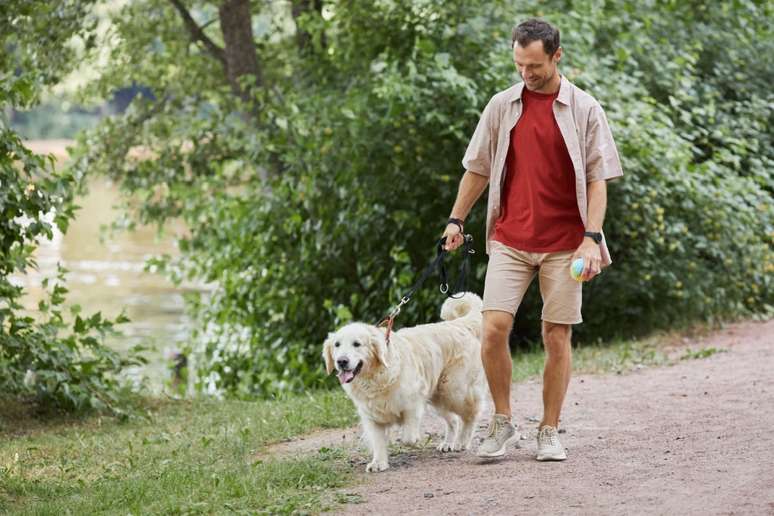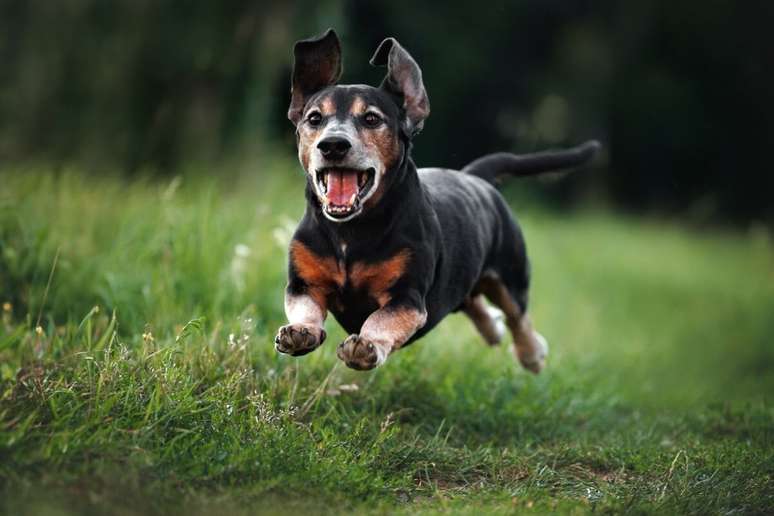Look at the preventive habits that promote the well -being and quality of life to Senior pets
The population of pets in Brazilian homes already exceeds 149 million, according to the data of the Pet Brazil Institute. Of this total, 20% are considered elderly. With progress in veterinary medicine and the growing attention of tutors, dogs and cats, in particular, they live more and more.
On average, felines live from 14 to 15 years. Those who are treated and spend most of their time in the house tend to have a longer life and can exceed 20 years. In the case of dogs, the average is between 10 and 13 years old, depending on the dimensions of the animal, with some reaching between 18 and 20 years.
This longevity is directly related to the emotional space that animals occupy, considered part of the family, reflecting the way they are treated. “Veterinary medicine has evolved, but the closest aspect of the tide, especially after the pandemic, was also essential to increase the life of life pets“Explains Leonardo Veiga, professor of veterinary medicine at Unisociesc.
Importance of preventive care
Leonardo Veiga underlines that preventive treatments should start early so that the animal reaches healthier old age. Regular visits a veterinarian and the check The magazines are essential to maintain the health of pets. “It is important that going to the office is performed at least once a year when she is young and will spend every six months in the senior phase,” he says.
The recommended exams include blood and image, which help to monitor the functioning of vital organs such as liver, kidneys and hearts. “First we identified a change, better we can treat. The possibility of success is much greater,” he explains. In addition, with the availability of home care, many animals, in particular the elderly, can be accompanied more comfortably, without leaving the house.
Signs of aging
The aging process varies between dogs and cats and races. Large dogs that age faster and therefore must start the check Every six months earlier, at the age of five. Small dogs and cats can start half -yearly monitoring from the age of seven.
Knowing how to recognize the natural signs of old age is essential to differentiate what is correct from age and what can indicate the disease. According to Leonardo Veiga, some normal tests are the hair of the face that become white, the most flavid skin and a Tired When walking. However, there are behaviors that should not be attributed only to age.
“It is a myth to think that the old animal does not play. If he has stopped interacting, running, if he sleeps all day, this is not a sign of old age, it is a sign of alarm. It can indicate pain, joint change or other health problem. pets The elderly still like to play, walk. But at a different rhythm, “he explains.
Agaling diseases
With the increase in life expectancy, problems that were once rare among the pets It has become more frequent. Among the most common are endocrine diseases, such as hormonal dysfunctions, neoplasms (tumors) and joint diseases. “Today it is common to serve dogs with 16, 18 years old and cats with more than 20. And the more they live, the greater the risk of developing age -related diseases. Therefore, the follow -up is essential,” says Leonardo Veiga.
Joint diseases deserve special attention. Often the difficulty of walking or apathy is erroneously attributed to old age, when, in fact, symptoms of joint pain. “These pains can be treated, raised and the animal can have the quality of life again,” he says.

Exercises and stimuli for active old age
Like humans, elderly animals must remain active. Muscle mass loss is common over the years, but can be minimized with physical activity oriented. “It helps light excursions, physical therapy and even interactive toys”, recommends the teacher, who adds: “Stimulates pets With love, games and even thin changes in the domestic environment, such as lower ramps or walks, they also contribute to physical and emotional well -being. “
Follow Veterinarian -Up
The main recommendation that Leonardo Veiga gives the tutors who want to guarantee a long and healthy life PET It’s simple but powerful: investing in the bond with the vet. “Choose a trusted professional, with whom you can speak and understand the history of your pet. This continuous sequel is the secret to anticipating the problems and maintaining the quality of life of the animal.”
Care with elderly animals
Take care of a PET The elderly are a commitment of love and responsibility. “With the veterinary accompaniment, affection, physical activity and attention to the signs of the body, it is possible to offer our four -legged companions a decent old age and well -being,” says the professor.
Below, check some important care with elderly animals!
1. Following -Up frequent veterinary
Pets The elderly need regular consultations – at least every six months – to detect early common ages such as kidneys, heart, joints and tumors. At this stage, blood tests, urine and image become even more important.
2.
The diet should be adapted to the new needs of the body. Specific rations for pets The elderly contribute to maintaining ideal weight, preserving the joints e facilitate digestion. In some cases, the vet may indicate nutritional supplements.
3. Care with mobility and comfort
Arthritis and muscle wear are common in old age. The unlitted rugs, orthopedic walks and easy access to food, water and rest areas make the difference in everyday life. Stairs and slippers should be avoided.
4. Mental and physical stimulum
Even with less disposal, the pets They must remain active. Short walks, light games and mental stimulation activities help in cognitive health and prevent boredom and depression. Physiotherapy and interactive toys help in mobility, mental health and quality of life.
5. Pay attention to the changes in behavior
Changes in appetite, sleep, mood, locomotion or behavior (Like isolation, apathy and difficulty walking) they can indicate pain, discomfort or disease, not only “age”. Observing and reporting these changes to the vet is essential for a quick diagnosis.
6. Bond, affection and attention
Affection, patience and a quiet environment make the difference for the well -being of pets in old age. A good relationship with the vet also contributes to a better quality of life.
By Genara Rigotti
Source: Terra
Ben Stock is a lifestyle journalist and author at Gossipify. He writes about topics such as health, wellness, travel, food and home decor. He provides practical advice and inspiration to improve well-being, keeps readers up to date with latest lifestyle news and trends, known for his engaging writing style, in-depth analysis and unique perspectives.





![Everything for the Light: Marina will reveal her difficult secrets .. which is waiting for you on Sunday from 2525 to August 29, 29 on TF1 [SPOILERS] Everything for the Light: Marina will reveal her difficult secrets .. which is waiting for you on Sunday from 2525 to August 29, 29 on TF1 [SPOILERS]](https://fr.web.img6.acsta.net/img/df/2a/df2a3d4927dfe0dfd4b9516f81a86a5c.png)


